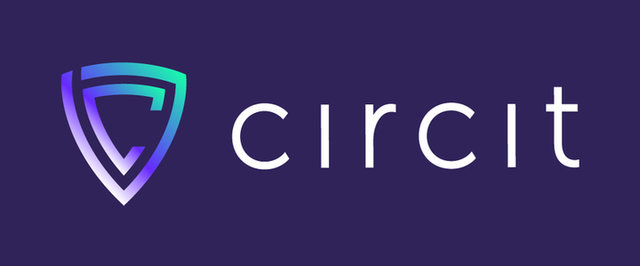Circit - Thought Leadership: Accounting Applications
Tech Stacks can hinder as well as accelerate firms’ efficiency and quality goals
While the last decade-plus has seen considerable advancements in technology for audit and accounting, many firms now realise their tech stacks have become fragmented from using many different tools. They now face a conundrum – has the quest for efficiency compromised workflow and productivity? Experts at Circit comment.

Acommon debate held at firms, at events, within publications or even across social media is which approach provides higher value: ‘best of breed’ or ‘best of suite’. However, firms are also beginning to apply their technology expertise utilising APIs to connect different cloud-based solutions somewhat dissolving the ‘groupings’.
Regardless of the debate and approach, firms have shifted mindset seen by the wide adoption of automation-led tools in an effort to address increasing workloads and resource capacity limitations. Accounting and audit firms are now busier than ever.
Many audit firms use a variety of technology solutions to streamline workflows, covering the likes of client collaboration, data analysis and access to transactions. This myriad of technology solutions may not have been by design due to periodic advancements by software vendors and firms themselves, plus limited capacity meaning only one or two key areas can be addressed each year leaving other areas to lag behind. This myriad of solutions can be inefficient and lead to a slowdown in the completion of jobs, more human interventions and reduced productivity from staff.
The Pain Points of Adopting Multiple Technology Partners
Risk and Compliance
Multiple systems create risk and compliance issues. For instance, differing data processing methods can mean firms needing to download, manipulate and update data across their tech stacks. This increases the likelihood of data being tampered with and misappropriated by third parties. Additionally, compliance becomes more of a challenge due to the need to use more resources to carry out due diligence and monitor multiple vendors.
Inefficiencies
Managing multiple audit tools is inefficient due to processes not being fully automated and still requiring manual intervention from staff. This may be as simple as accessing and recalling how to use multiple tools or obtaining and converting unstructured data due to a variety of sources. This is slow, time-consuming and carries the risk of human-generated errors.

Daxin COO Yue Hong Meets with Daxin Saudi Chairman Abdullah Fahad Al sahli. Credit: Daxin Global
Clients (And Staff) Take Time To Learn New Systems
Staff is a precious resource, as is the time of clients. Working with several technology partners means employees and clients must invest time learning how each tool works. While audits are being completed, clients will still have to tend to business as usual, so they may not have the time to master tools. Similarly, staff training time will be stretched, leading to auditors only gaining a simple grasp of many software solutions rather than being experts in one.
Staff May Be Dissatisfied With Workflows
It’s critical for audit firms to do whatever they can to retain their staff. ICAEW’s Audit and Assurance Faculty conference revealed that 73% of attendees identified attracting and training talent as their biggest challenge. However, the many tools approach can also lead to dissatisfied staff walking out due to inefficiencies, leading them to come to the realisation that there has to be a better way to streamline workflows.
Weaker Negotiation Power With Vendors
Working with multiple vendors means account reviews, contract renewals and software re-education that can end up taking place all year round, while the use of only one or two products in a larger vendor suite may also incur higher licensing fees or lower discounting options.
Periodically, where possible, firms should be scanning the technology landscape and recording existing software advantages and disadvantages, allowing for quicker initial comparison against product updates made by alternative providers. This saves time in doing a full internal and external assessment in phase one.
Considerations outside of direct product by product comparisons should then be made on the impact of centralising multiple solutions in a single vendor offering or ‘best of suite’.

Amit Popat
Director at Rickard Luckin

The Advantages of Centralising Processes with a Single Technology Partner
Confidence On Integrity and Security of Data
Vendors themselves are constantly reevaluating their own suppliers which can in turn require firms to repeat due diligence on these changes. Even having to monitor security for multiple vendors is time-consuming, and there is the chance technology stacks may be inconsistent across tools. As a minimum, begin with suppliers demonstrating the highest security standards. Circit holds SOC 2 and ISO 27001 certifications for instance.
Firm Wide Visibility & Reporting
Capturing multiple processes, and therefore data points, within a single platform simplifies reporting on engagements. At a basic level, it reduces the time for team members to locate updates and generate reports. If utilised fully for deeper insights on engagement delays, team inefficiencies and resource management can be secured.
Reduced Client Friction
Every solution a firm deploys requires a level of onboarding and training by the end client. This can become frustrating for clients when multiple solutions are required by the firm to complete an engagement. This is heightened for audit where clients only interact with firms over a limited period meaning knowledge and re-training is often lost in future years, restarting the onboarding process.
Stronger Account Management to Leverage Success for Audit Firms
Working alongside account managers to leverage success for audit firms and their clients becomes easier if a single technology solution is deployed. This is because account managers have a more complete picture, so can work effectively to streamline workflows and automate processes. Correspondingly, adopting multiple vendors means account managers won’t have full accountability and may not be able to overcome vendor-related issues other than their own.
Circit provides a best of breed approach if preferred by firms, but can capture multiple processes in a central cloud native platform. Combining this with API technology mean Circit can fit within firms’ existing eco-systems securing efficiency and quality improvements.
Circit’s focus is advancing legacy audit processes. This is where we have started:
Confirmation Requests – Create, send and manage all types of audit confirmation with providers globally. Bank, Accounts Receivable, EBP, Investments and more.
Verified Transactions – Utilising Bank APIs, teams can independently obtain verified transactions directly from source, with coverage including banks and fintech providers.
Verified Insights – Realtime visualisation of cashflow supporting risk assessment and providing comfort to teams.
Client Collaboration – Centralising file and messaging exchanges with clients to secure timely engagements.
Digital Signing - Secure and legally binding e-signing for all internal and external documents.
If you’re interested and ready to learn more about moving your audit processes to Circit’s platform, get in touch! Visit: www.circit.io
